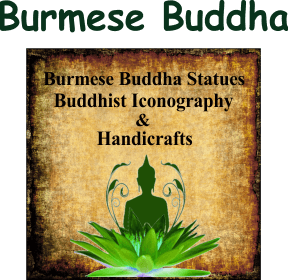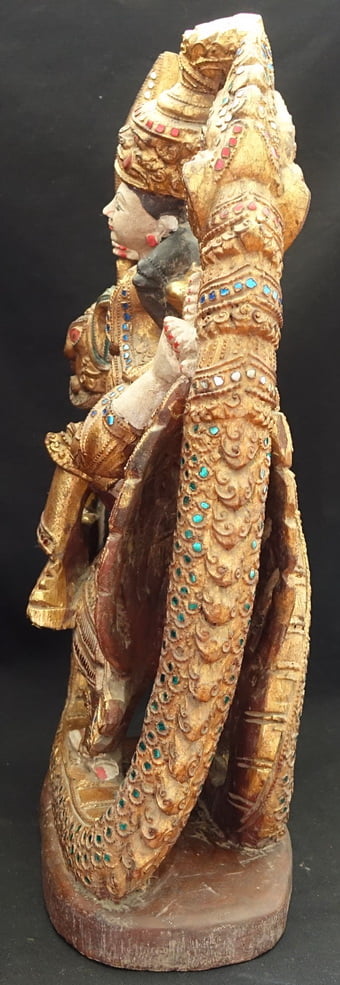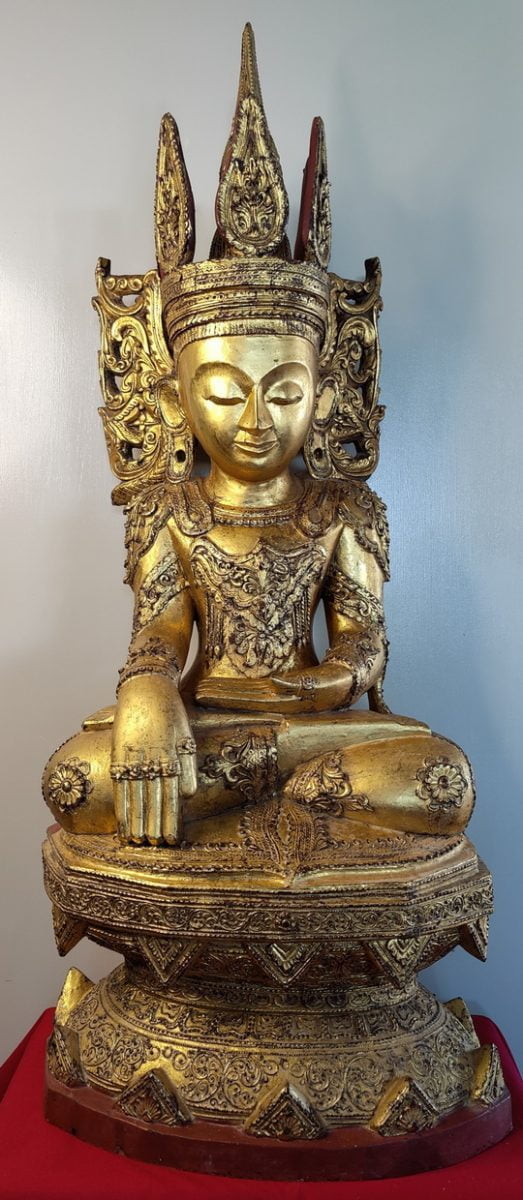Antique Gilded Burmese Wood Carving
AGE: – 19th Century
CONSTRUCTION: – Teak Wood – glass mosaic and thayo lacquer decoration
HEIGHT: – 48cm
WIDTH: – 27cm
DEPTH: – 12cm
WEIGHT: – 3.85 Kg.
#101A – PRICE: – CONTACT
Antique Gilded Burmese Wood Carving with popular mythological creatures frequently mentioned in Burmese myth, legend, and folklore, gilded and decorated with thayo lacquer and coloured glass mosaics. The mythological creature on which the Devanat/angel is standing is known in Burma as the Galon, also popularly known as the Garuda in other cultures such as Indonesia and Thailand, and is portrayed in carvings and paintings in Buddhist and Hindu iconography, literature, and art in south-east Asia and India.
Nagas, a popular theme in Buddhist and Hindu art are seen flanking either side of the galon and the angel with their bodies snaking across the base on both the front and the back, extending upwards.
Read More
Garuda or “devourer” is a huge mythical bird-like creature, it often appears together with the Naga (serpent) and Nat in Burmese wood carvings. The
Garuda according to Hindu myth is thought to be a lesser divinity usually the vehicle (or vahana) of Vishnu, the supreme preserver deity. In regional folklore, the galon (Garuda) is an arch-enemy of the Nagas (usually depicted as a snake or dragon).
Garuda has been depicted in a variety of ways, although most often he has the upper body and wings of an eagle with the lower body of a human. In Buddhist mythology, the garuda is a race of enormous predatory birds of great intelligence and social organization.
Garuda is also occasionally depicted as the vehicle of Amoghasiddhi, one of the five Dhyani or “self-born” Buddhas. The term garuda is sometimes even used as an epithet for the Buddha himself. Like the nagas, the garuda combines the characteristics of animals and divine beings, and are therefore considered to be amongst the lowest of the devas or gods in Buddhism.
While the symbol of the majestic galon had been circulating in Southeast Asia for centuries, it was only in British Burma that this mythology was evoked as a metaphor for the colonial situation. In 1930, the galon came to represent the Burmese peasantry’s aspirations to restore the banished monarchy by overthrowing the British (represented by the naga).
By tattooing themselves with the galon symbol, rural cultivators exhibited their allegiance to Saya San, the rebellion leader who would be known as the Galon King. In time, the galon would become synonymous with the very notion of Burmese resistance.









